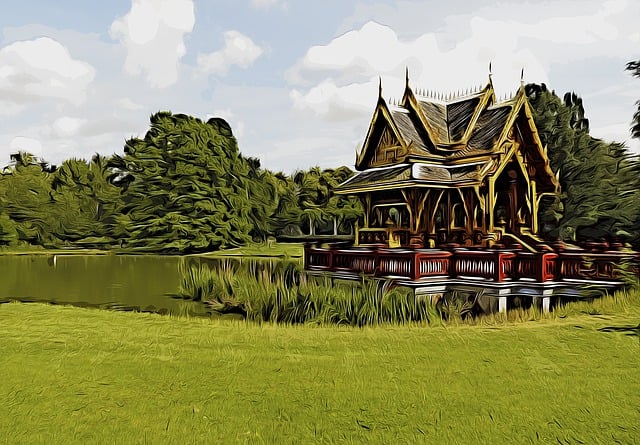Mixed-use real estate development integrates residential, commercial, and retail spaces into vibrant, diverse neighborhoods. This approach leverages synergy among land uses, encourages walkability, reduces traffic congestion, and fosters happier, healthier communities. By offering convenient access to daily needs, work opportunities, and entertainment within walking distance, mixed-use districts maximize urban area potential while enhancing social interaction and community bonds. Implementation requires balanced integration of amenities, pedestrian-friendly design, collaboration between professionals, and partnerships among local stakeholders for cohesive district vision and enhanced urban liveliness.
In today’s dynamic urban landscape, fostering mixed-use development is key to creating livelier districts. This article explores the transformative potential of integrating residential, commercial, and retail spaces within real estate projects. We delve into the benefits ranging from increased foot traffic to enhanced community engagement. Additionally, we provide practical strategies for implementing mixed-use concepts in urban areas, offering insights for professionals seeking to revitalize and rejuvenate vibrant neighborhoods.
Understanding Mixed-Use Development in Real Estate

Mixed-use development is a strategic approach in real estate that integrates residential, commercial, and sometimes even retail spaces within a single project or district. This concept aims to create vibrant and diverse neighborhoods where people can live, work, and socialize all in one area. By combining different land uses, mixed-use developments offer a more convenient and sustainable lifestyle for residents.
In real estate terms, the synergy between these various functions is key. Commercial spaces provide income opportunities while residential units ensure a constant population to support local businesses. This interconnectedness fosters a lively district where people are more likely to walk or cycle to work, reducing traffic congestion and carbon emissions. Such developments also enhance urban mobility by encouraging a mix of activities within walking distance, ultimately contributing to happier and healthier communities.
Benefits of Integrating Residential, Commercial, and Retail Spaces

Integrating residential, commercial, and retail spaces in real estate development has multiple advantages for urban districts. This mixed-use approach creates vibrant neighborhoods where residents have easy access to daily needs, work opportunities, and entertainment options all within walking distance. The result is a more livelier and sustainable community, reducing the need for lengthy commutes and encouraging foot traffic, which benefits local businesses.
Moreover, such diverse zoning fosters social interaction and strengthens community bonds. Residents can interact with neighbors from different walks of life, enhancing a sense of belonging and community spirit. This mixed-use dynamic also contributes to more efficient land use, maximizing the potential of urban areas without expansive infrastructure requirements often associated with segregated zoning models.
Strategies for Implementing Mixed-Use in Urban Districts

Implementing mixed-use strategies in urban districts involves a thoughtful approach that seamlessly integrates residential, commercial, and recreational spaces. Developers can encourage vibrancy by designing buildings with diverse amenities, ensuring a balanced distribution of uses across different heights and locations within the district. Encouraging walkability is another key strategy; this can be achieved by prioritizing pedestrian access, creating green spaces, and arranging buildings to facilitate easy movement between various functions.
Real estate professionals play a vital role in facilitating these changes. They can collaborate with urban planners and architects to identify suitable sites for mixed-use developments, considering factors like proximity to public transport, existing infrastructure, and community needs. By fostering partnerships between stakeholders—including local businesses, residents’ associations, and government bodies—a cohesive vision for the district can emerge. This collaborative approach ensures that the final product meets the aspirations of all involved while enhancing the overall liveliness and sustainability of urban areas.






